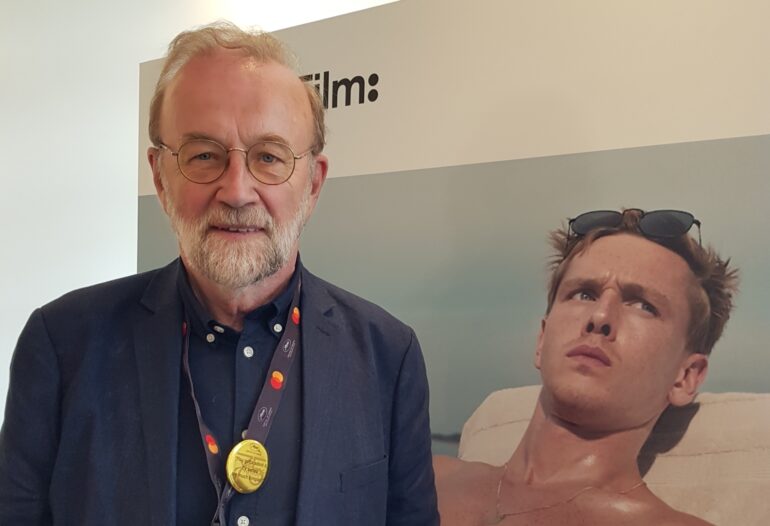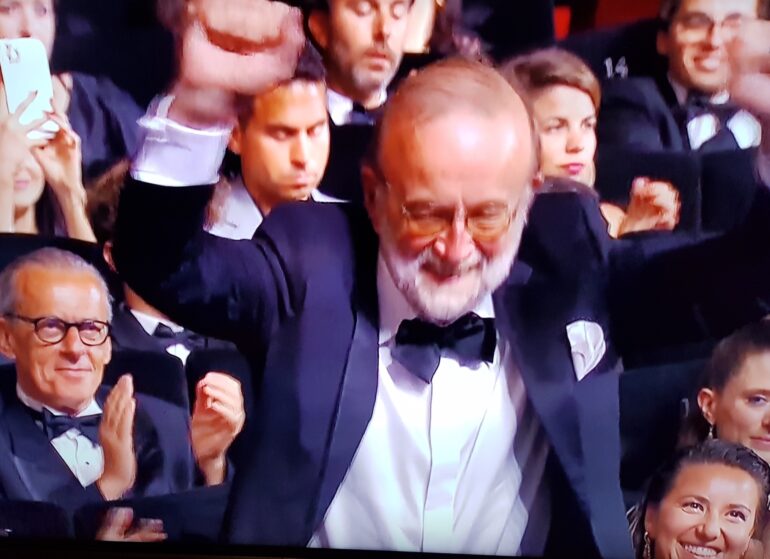WRITTEN BY: Annika Pham
Mentioned first by the Palme d’or winning director in his acceptance speech on Saturday, Boman has been key in Östlund’s rise to the top.
Regularly cited by Östlund as his mentor, Kalle Boman (79) has been the director’s creative consultant and ear, ever since the double Palme d’or winning director went to film school at the HDK Valand-University of Gothenburg, over two decades ago, where Boman served as a professor.
Boman’s own first steps in the film industry was in the mid-1960s, when he joined Europa Film - at the time one of the three big Scandinavian film studios with SF Studios and Sandrew Metronome.
He acted as assistant director to legendary filmmaker Bo Widerberg, notably on his classic Elvira Madigan for which Pia Degermark won a Best Actress Award at the 1967 Cannes Film Festival.
Boman then widened his skilled with production management, editing and sound, and started in 1970 a defining collaboration with director Roy Andersson. He was editor both on A Swedish Love Story (1970) and Giliap (1975) which he also produced. He went on collaborating with Marie-Louise Ekman, Lene Berg, Ernst-Hugo Järegård, Charlotte Gyllenhammar.
The most long-lasting and fruitful creative partnership has been with Östlund and his producer Erik Hemmendorff, since the early 2000s.
“Ruben and Erik had finished their film studies when I thought-these two guys have to get together-there is an amazing chemistry between them,” told Boman to nordicfilmandtvnews.com.
Hemmendorff and Östlund went on setting up the cutting edge collective Plattform Produktion in 2002 and Boman joined the company as partner in 2010.
Boman produced Östlund’s first feature The Guitar Mongoloid in 2014, and the same year, the two entered an art installation at the Vandalorum Musum in Värnano, Sweden which served as inspiration for the director’s 2017 Palme d’or winning film The Square.
For Boman, over the years, the Cannes Film Festival has been a top priority for him and his roster of filmmakers. “I’ve worked with Bo Widerberg, Roy Andersson and Ruben Östlund and all had Cannes as their ultimate goal."
According to Östlund, each year, together with Boman and Hemmendorff, the three sit down at a café in Cannes and brainstorm ideas for the director’s next film venture, see other story: CLICK HERE..
“We get together after the Cannes Film Festival, and what we do is not ask ourselves what we will do next, as we’ve already set Cannes as our ultimate goal. What we do is exchange ideas on how to create a film that will have a chance to be selected in Cannes,” said Boman.
A fervent believer in the future of film on the big screen, the veteran producer, recipient of a Guldbagge Honorary Award in 2014 said. “We have to protect where film is being platformed. As audiences, we can influence content, therefore it is key to continue to make films for the cinemas, and to share the big screen experience,” he said.
According to Östlund, his next project after Triangle of Sadness -discussed again with Boman and Hemmendorff, will unfold in a long-haul flight. “After take-off, the crew suddenly announces that unfortunately, the entertainment system is down so you are now doomed to sit for 16 hours without any digital entertainment. It will be like an experimental lab looking at our behaviour, this time in the air,” Östlund told nordicfilmandtvnews.com.

